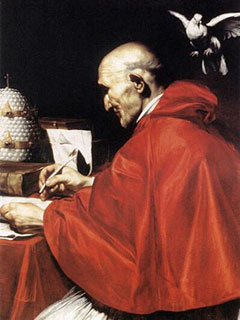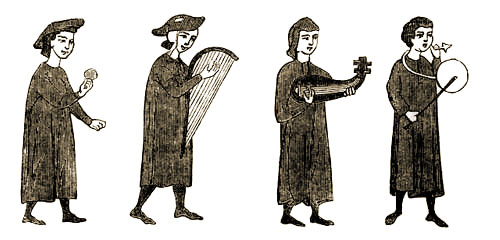The Middle Ages in music historical terms cover the time after the fall of the antique Roman empire up to the first half of the 15th century and are divided into three main periods: The time of the Gregorian chant until approximately 1100 with predominantly monophonic music, the music of the 12th and 13th century with the development of polyphonic music and the music of the ars nova with an increasing differentiation of style in different countries.
 Papa Saint Gregory I ou Gregory o Grande c. 540 – 12 Março 604
Papa Saint Gregory I ou Gregory o Grande c. 540 – 12 Março 604
Pope Gregory I, the Great (about 540-604) reformed the liturgy and initiated the collection of contemporary liturgical chants, educated monks introduced these Gregorian chants to the monasteries of the western countries. The first liturgical dramas and mystery plays were created, which, subsequently, were performed outside of the clerical context. This epoch also brought many innovations in notation, for example, the stave was introduced.
 Uns trovadores tocando seus instrumentos.
Uns trovadores tocando seus instrumentos.
The development of the secular song began towards the end of the 11th century with the troubadours and the Minnesingers, first supported and shaped by the aristocracy and its way of life. With the demise of the knighthood and the newly prospering urban population, the traditions of the medieval Minnesingers were carried on and developed further by the Meistersingers. These singers, who mostly belonged to the artisan and trading classes of the German towns, were themselves organised in guilds.
Towards the end of the epoch instrument and polyphonic music gained influence, the transitions to the Renaissance are seamless.